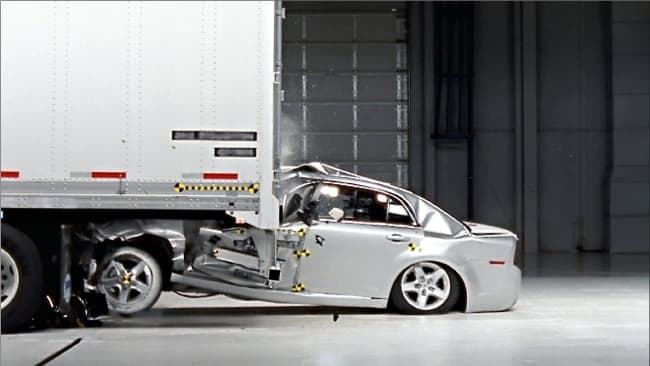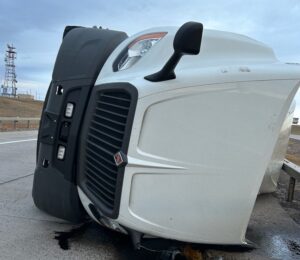WASHINGTON — The General Accounting Office has recommended that the Department of Transportation take steps to provide a standardized definition of underride crashes and data fields, share information with police departments on identifying underride crashes, establish annual inspection requirements for rear guards and conduct additional research on side underride guards.
The DOT concurred with GAO’s recommendations, which were first issued in March and made public April 15.
Truck underride crashes are collisions in which a car slides under the body of a truck — such as a tractor-trailer or single-unit truck — because of the height difference between the vehicles.
During these crashes, the trailer or truck may intrude into the passenger compartment, leading to severe injuries or fatalities.
Current federal regulations require trailers to have rear guards that can withstand the force of a crash, whereas the rear guards required for single-unit trucks do not have to be designed to withstand a crash.
There are no federal side or front underride guard requirements.
The GAO said the recommendations were the result of a study after it was asked to review data on truck underride crashes and information on underride guards.
The GAO studied the data DOT reports on underride crashes and the development and use of underride guard technologies in the United States.
GAO said it had analyzed DOT’s underride crash data for 2008 through 2017, reviewed the National Highway Traffic Safety Administration’s proposed regulations and research on new guard technologies and interviewed stakeholders, including DOT officials, industry and safety groups, and state officials selected based on reported underride crash fatalities and other factors.
According to crash data collected by police and reported by NHTSA, fatalities from “underride” crashes represent a small percentage of all traffic fatalities. From 2008 through 2017, an average of about 219 fatalities from underride crashes involving large trucks were reported annually, representing less than 1% of total traffic fatalities over that time frame.
However, the GAO report said, these fatalities are likely underreported because of variability in state and local data collection.
For example, police officers responding to a crash do not use a standard definition of an underride crash and states’ crash report forms vary, with some not including a field for collecting underride data. Further, police officers receive limited information on how to identify and record underride crashes.
As a result, NHTSA may not have accurate data to support efforts to reduce traffic fatalities, the GAO said.
The GAO noted that underride guards are in varying stages of development, and gaps exist in inspection of rear guards in current use and in research efforts for side guards.
- NHTSA has proposed strengthening rear guard requirements for trailers (the rear unit of a tractor-trailer) and estimates about 95 percent of all newly-manufactured trailers already meet the stronger requirements. Although tractor-trailers are inspected, Federal Motor Carrier Safety Administration annual inspection regulations do not require the rear guard to be inspected, so damaged guards that could fail in a crash may be on the roadways
- Side underride guards are being developed, but the GAO said stakeholders it interviewed identified challenges to their use, such as the stress on trailer frames due to the additional weight. NHTSA has not determined the effectiveness and cost of these guards, but manufacturers told GAO they are unlikely to move forward with development without such research
- Based on a 2009 crash investigation, the National Transportation Safety Board recommended that NHTSA require front guards on tractors. NHTSA officials stated that the agency plans to complete research to respond to this recommendation in 2019. However, stakeholders generally stated that the bumper and lower frame of tractors typically used in the U.S.may mitigate the need for front guards for underride purposes.
The Trucker News Staff produces engaging content for not only TheTrucker.com, but also The Trucker Newspaper, which has been serving the trucking industry for more than 30 years. With a focus on drivers, the Trucker News Staff aims to provide relevant, objective content pertaining to the trucking segment of the transportation industry. The Trucker News Staff is based in Little Rock, Arkansas.















